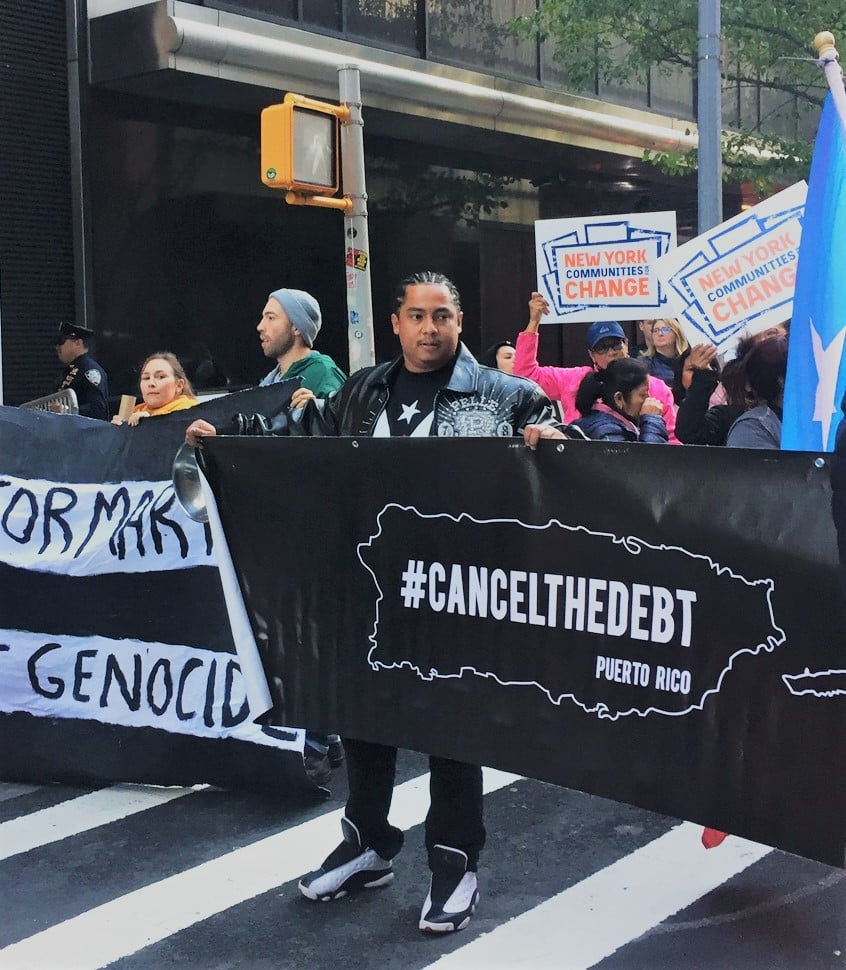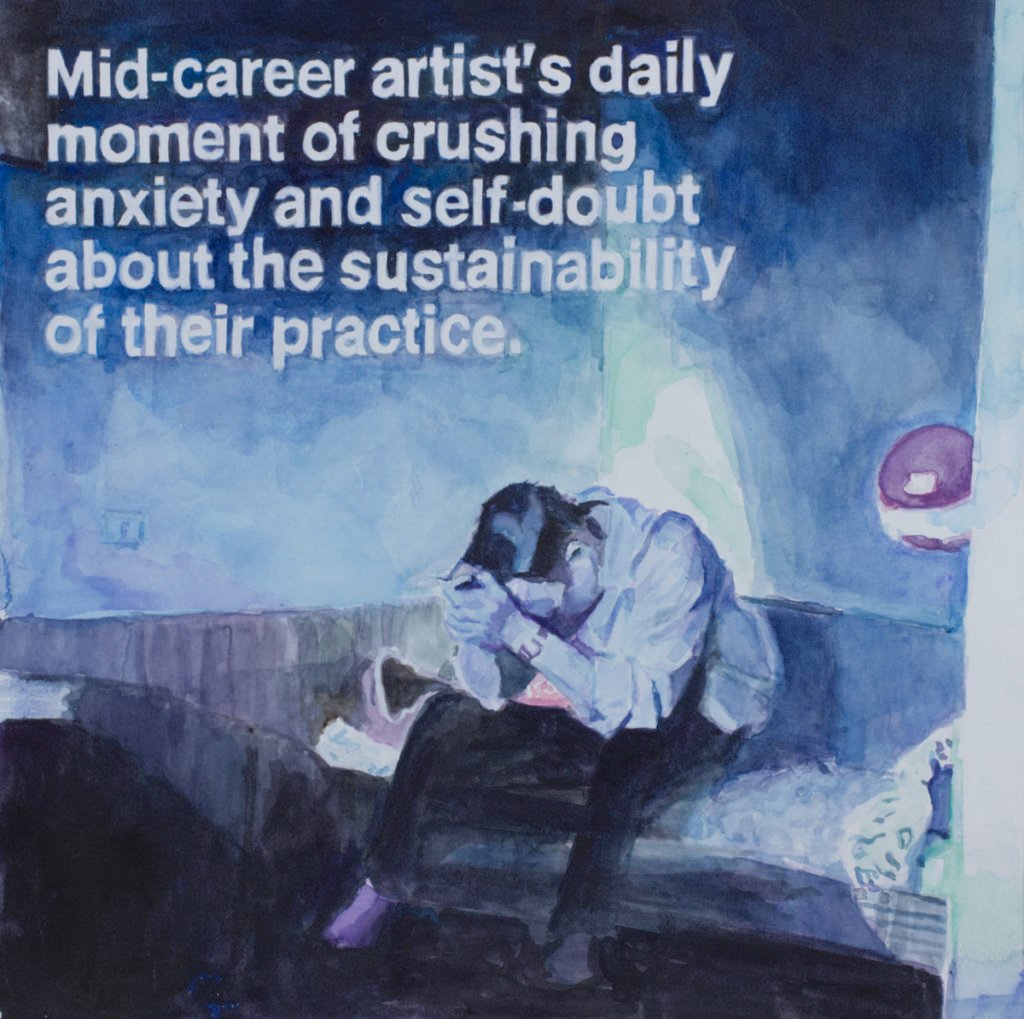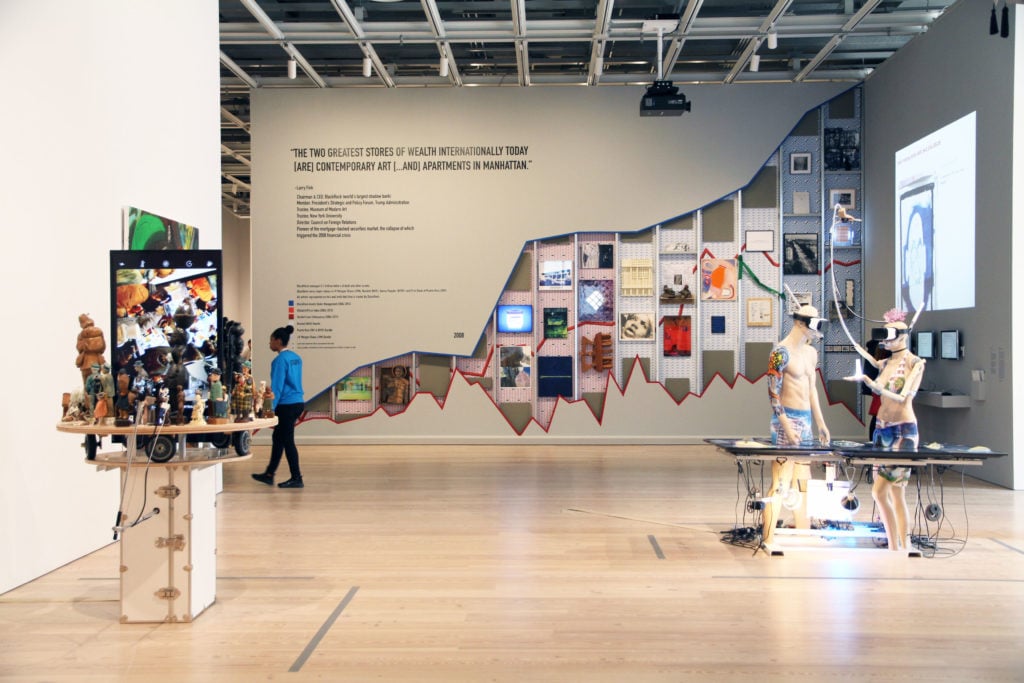Opinion
The Gray Market: Why Ethical Vetting of Collectors Won’t Reshape the Art Market (and Other Insights)
Our columnist shines a light on the firewalls protecting private sales from the activist pressure now changing museum boardrooms.

Our columnist shines a light on the firewalls protecting private sales from the activist pressure now changing museum boardrooms.

Tim Schneider

Every Monday morning, artnet News brings you The Gray Market. The column decodes important stories from the previous week—and offers unparalleled insight into the inner workings of the art industry in the process.
This week, asking whether the private is political in the art market…
On Thursday, Brian Boucher took to artnet News to ask, in the wake of Kandersgate, whether artists and dealers should vet private collectors to see if they meet similar ethical standards to those now being discussed for institutional donors. His reporting cross-sections the art world to incorporate valuable insights from all three of the aforementioned parties, as well as a prominent art attorney and an anonymous museum activist. But the piece ends on a cliffhanger that I feel compelled to swing toward by rope and pick up.
That cliffhanger comes by way of the unnamed museum activist, who states, “Museums and the market are structurally different: museums claims to uphold public ideals, and can be pressured on those terms… But, acting collectively, could artists use their power to channel the resources of the art market as well?”
The thought is intriguing. It’s an understatement to say that we have not seen much market-based collective action by artists here in the US, which has been the largest art market in the world for almost as long as anyone has been keeping track. From the Great Depression until about 1942, we had the Artists Union—formerly known as the Unemployed Artists Union, before its tactics pressured the federal government to create the Public Works of Art Project as a part of the New Deal—and… well, that’s been about it. (I’m omitting the Art Workers Coalition because it lasted only a few months in 1969 and focused strictly on provoking institutional change within MoMA rather than broader issues within the trade.)
If artists were once again willing to act collectively on a grand scale, I think an awful lot of aspects of the US art market could be different than they are. From negotiating standard cost-sharing agreements with dealers to bargaining with health insurers for discounted group rates (not to mention an artists’ resale royalty), a full-fledged American artists’ union might have the muscle to dramatically reshape working conditions for its members, no matter where each sits on the hierarchy of commercial success. Last year, I even speculated about how such a collective could contribute to solving some of the most existential challenges faced by mid-market galleries.
However, I have to be honest: if the issue that sparks the first widespread collective action among fine artists in the US in almost 90 years is the need to vet private collectors before selling them work, I’ll invite everyone who takes the opposite side of the bet to empty a full bag of garbage into my bedroom.
Let me explain.

#CancelTheDebt protesters from New York Communities for Change demonstrate against trustee Steven Tananbaum at the October 21 opening of the expanded Museum of Modern Art. Image: Eileen Kinsella.
Before I go further, I need to say this: I don’t for one moment question the sincerity and commitment of the artists most directly involved in demonstrating against patrons like Warren Kanders, as well as MoMA trustees Larry Fink and Steven Tananbaum, whose three fortunes hinge in part on investments in, respectively, weapons manufacturing, private prisons, and the allegedly predatory handling of Puerto Rican debt.
I fully believe that these same artists would ask their dealers to turn away interested buyers with ethically problematic affiliations—and, as Boucher points out, some artists, including Nicole Eisenman, Michael Rakowitz, and William Powhida, already do.
I support and admire these artists’ willingness to walk the walk. I just think they are rare exceptions to the rule on an issue that would require widespread agreement before it could impact the US art market on anything more than an individual basis.
For context, art economist Don Thompson estimated in his 2010 book The $12 Million Stuffed Shark that there were about 80,000 artists living in New York and London combined, with about 5,400 of them having at least some gallery representation and selling some amount of work per year. About 5,400 may not sound like much, but history says it’s a heavy lift to get a few thousand artists to agree on anything—let alone anything that happens in the private market, where no one has to know about the transactions except the people directly involved.
I think this is especially true in light of the fact that artists at different levels of the market have different incentives. For instance, I’d wager that Richard Serra isn’t pacing around his studio today going, “Sheesh, I really wish my peers and I could collectivize for the sake of getting reasonably priced legal advice on public commissions.” But that thought is highly likely to occur to an emerging artist buckling under the weight of student debt who faces a commission contract from a real-estate developer or municipal government.
Now apply this principle to vetting private collectors’ fortunes on ethical grounds. And keep in mind that the art market operates on a so-called power law, through which works by a small minority of artists generate the vast majority of sales revenue. Thompson, for instance, estimates that only about 375 of those 80,000 artists were making $100,000 or more per year by selling their work circa 2010.
Ironically, this means that the artists who could have the most impact by blacklisting problematic collectors are also probably the least inclined to actually do it. Change wouldn’t just require unity from the Eisenmans, Rakowitzes, and Powhidas of the world. It would require unity from many artists at the Serra/Jeff Koons/Takashi Murakami level, too. Call me the bedbug in the honeymoon suite, but in general, that’s not the group I’d rely on for revolutionary moral action.

William Powhida, Crushing Anxiety (Chernobyl) (2019). Courtesy of the artist and Postmasters.
For the sake of argument, though, let’s cram the blue-chippers into the woodchipper and focus strictly on emerging and mid-career artists. Is change at these levels of the market achievable, especially in light of how thoroughly ethical patronage in the arts has seemed to dominate social media and art-media coverage for the past two years or so?
I hate to say it, but I’m still skeptical.
Consider this: According to a recently published study by the Pew Research Center, just 10 percent of American Twitter users generated a dizzying 97 percent of tweets concerning US politics in the year surrounding the 2018 midterm elections. And despite the perception that the platform has become saturated with this content, in reality, political tweets made up only 13 percent of all tweets over the same period.
If Pew conducted a similar analysis of social-media posts about ethical patronage, my belief is that the ratio would be at least as skewed, if not even more so—even after isolating the sample pool strictly to active users with a professional interest in the arts. (Obviously, the percentage would be much smaller than for national politics if we surveyed the entire population.) And as Boucher’s reporting suggests, even fewer people would be concerned about vetting collectors for private sales specifically. As an example, two former gallery directors told him that “in their many years, hardly any artists inquired about who bought their work.”
This anecdotal evidence chimes with my own informal conversations with various people around the industry, and my own eight years in the gallery sector. My personal sense is this: assuming the prospective buyer in question is anything short of a known war criminal or serial sexual predator, the personal trait foremost in artists’ and dealers’ minds when deciding whether or not to sell them a work is, “Will they actually pay?” If the answer is “yes,” little else matters.

Occupy Museums, Debtfair (2017). Photo: Henri Neuendorf.
To be clear, I’m not saying that most artists and dealers are inordinately greedy or craven people. What I’m saying is that it is extraordinarily hard to make a career out of selling art. A huge part of this fact stems from the fundamentals of the business: very few buyers, relatively high prices, and exceedingly high overhead costs (assuming we’re dealing with physical galleries mostly selling physical artworks made in physical studio spaces).
Beyond those factors, though, another major reason is that many buyers have a tendency to delay payment for a distressingly long time—and/or to renege on their commitment completely. And perversely, this phenomenon rears its pustule-riddled head most frequently in transactions concerning the artists and dealers who need the sales most.
Why? Because buyers (or “buyers,” as the case may be) of mid-career and emerging art usually have less money and less of an industry pedigree than those acquiring from blue-chip dealers. Plus, short of the rare case where a young or overlooked artist starts going atomic in the marketplace, there should be little to no competition for the piece(s) in question, meaning the client feels little to no urgency to complete the transaction.
Stew all of the above together in a witch’s cauldron, and it boils down to tremendous incentive for sub-elite artists and dealers to prioritize the likelihood of actually receiving a wire transfer from the client over almost anything else.
I’m not saying that’s the way things should be. It’s just my perception of the way things are.
I completely agree with Boucher’s activist source: collective action by artists has the potential force to alter the ethical parameters of the art market. I’ll also admit that I thought it was highly unlikely that Kanders could be ousted from the Whitney, and I was dead wrong there. But even if lightning strikes twice by blowing Fink and Tananbaum off the MoMA board, I still don’t expect the activist electricity to arc to private sales anytime soon. If it does, though, it will be time to re-evaluate the landscape from core to clifftops.
That’s all for this week. ‘Til next time, remember: politics may be the art of the possible, but there’s a reason most people despise politicians.